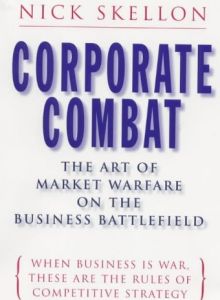Join getAbstract to access the summary!

Join getAbstract to access the summary!
Nick Skellon
Corporate Combat
The Art of Market Warfare on the Business Battlefield
Nicholas Brealey Publishing, 1999
What's inside?
Back to the business battlefield!
Recommendation
If The Art of War graces your shelf, this book is for you. Author Nick Skellon argues that you can apply military lessons to corporate strategy. His theories make for fascinating reading. For instance, he draws parallels between the pitched head-to-head combat of the American Civil War and Burger King’s battles with McDonald’s. Like the Persians harassing the larger Roman forces with raids in 359, Honda attacked Harley-Davidson in the United States in the 1960s by grabbing the clean-cut college kids that Harley avoided. Sure, Skellon stretches the analogy too far, and by the time he gets to case studies such as Wal-Mart, there’s barely a hint of military jargon. Still, getAbstract recommends this intriguing look at corporate successes and failures to readers who realize that brilliant strategy is brilliant strategy, whether on the battlefield or in business.
Summary
About the Author
Nick Skellon is a speaker and consultant. A former Army officer, Skellon worked in sales and marketing at several firms, including Mars, Duracell and Rothmans.
















Comment on this summary